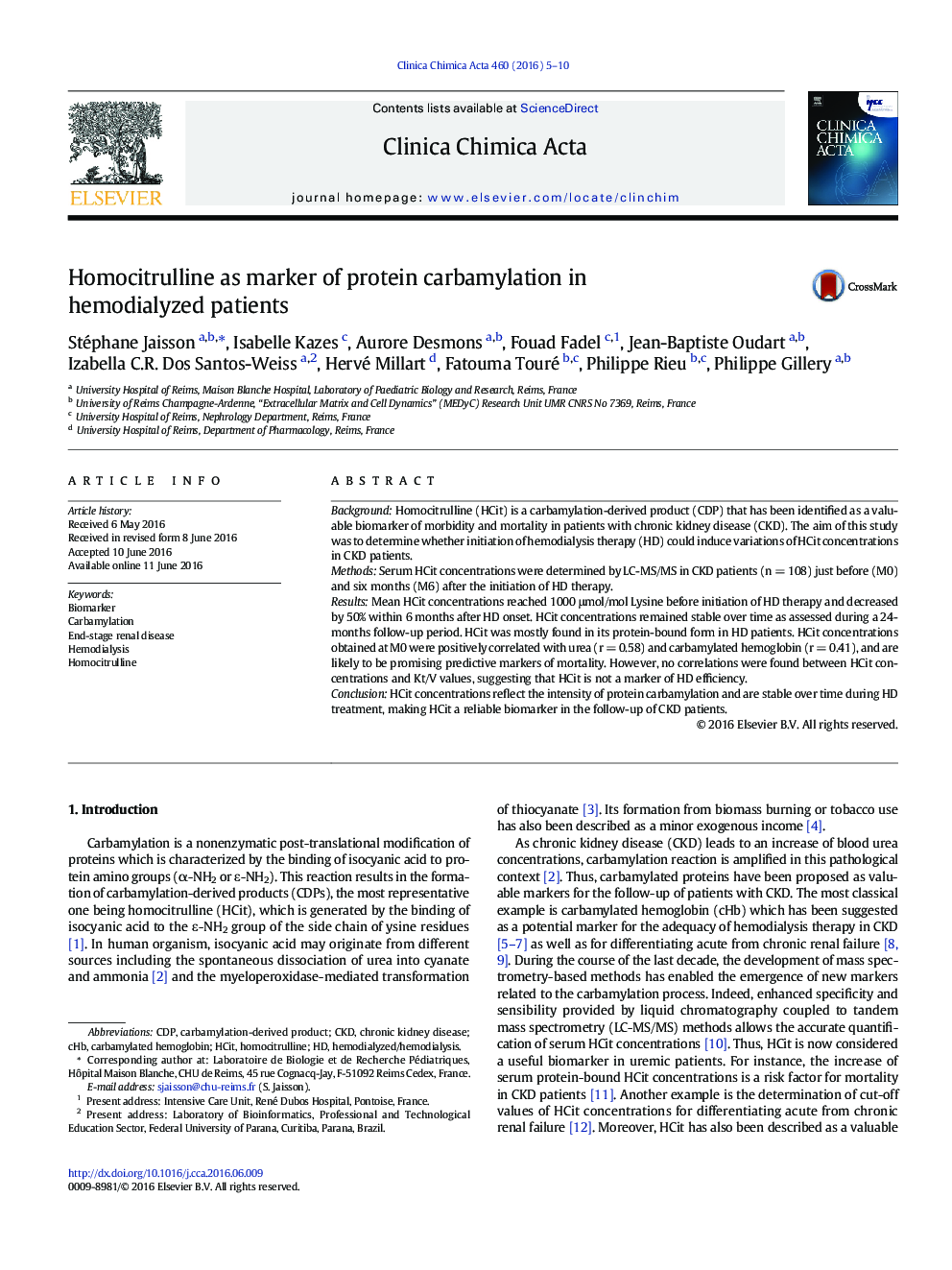| Article ID | Journal | Published Year | Pages | File Type |
|---|---|---|---|---|
| 1965024 | Clinica Chimica Acta | 2016 | 6 Pages |
•HCit is a marker of protein carbamylation in hemodialyzed patients.•HCit concentrations are stable during hemodialysis therapy.•HCit is mostly found in its protein-bound form in serum of hemodialyzed patients.
BackgroundHomocitrulline (HCit) is a carbamylation-derived product (CDP) that has been identified as a valuable biomarker of morbidity and mortality in patients with chronic kidney disease (CKD). The aim of this study was to determine whether initiation of hemodialysis therapy (HD) could induce variations of HCit concentrations in CKD patients.MethodsSerum HCit concentrations were determined by LC-MS/MS in CKD patients (n = 108) just before (M0) and six months (M6) after the initiation of HD therapy.ResultsMean HCit concentrations reached 1000 μmol/mol Lysine before initiation of HD therapy and decreased by 50% within 6 months after HD onset. HCit concentrations remained stable over time as assessed during a 24-months follow-up period. HCit was mostly found in its protein-bound form in HD patients. HCit concentrations obtained at M0 were positively correlated with urea (r = 0.58) and carbamylated hemoglobin (r = 0.41), and are likely to be promising predictive markers of mortality. However, no correlations were found between HCit concentrations and Kt/V values, suggesting that HCit is not a marker of HD efficiency.ConclusionHCit concentrations reflect the intensity of protein carbamylation and are stable over time during HD treatment, making HCit a reliable biomarker in the follow-up of CKD patients.
